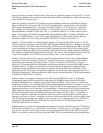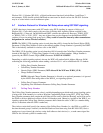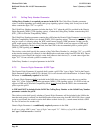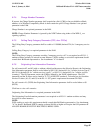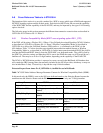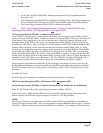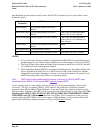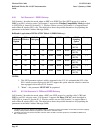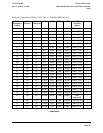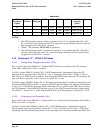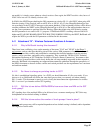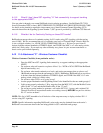
CG-EWCG-001 Wireless E911 Guide
Issue 3, January 6, 2004 BellSouth Wireless E9–1–1/SS7 Interconnection
Guide
not modify it, it simply passes whatever value it receives. Once again, the NDET sets this value, but as of
NA013 does not use it to identify wireless calls.
In NA016, the NDET began checking the OLI parameter on wireless E9-1-1 calls ONLY when using AIN
Selective routing. If the received value was #3d, #3e, or #3f (61, 62, 63), the ChargePtyStationType was
set accordingly in the TCAP TAT message to the remote database. If the originating wireless office did not
send the parameter, the NDET set the ChargePtyStationType to #3d (61) so the remote database knows to
use the correct parameter to perform Selective Routing. Other than when using AIN Selective routing,
the OLI parameter is not used for E9-1-1 purposes. If BellSouth NDET is running software NA016 or
higher and IF AIN OFF-BOARD SELECTIVE ROUTING IS BEING USED by the NDET, BellSouth will
require the WSP to provide the OLI parameter as defined in this document.
A.11 Attachment "B" - Wireless Customer Questions & Answers:
A.11.1 Why is BellSouth issuing this document?
There have been conflicting views on the meaning of the terms "CAS" and "NCAS" in the Phase 2
environment, and on what data should be placed in the various IAM parameters of an SS7 wireless call.
NENA recognized this conflict and established a committee that included members from the wireless
carriers, service providers, and public safety community. They created the "NENA 05-501 Technical
Information Document on SS7 Guidelines for MSC to Selective Router Connectivity" document so that
9-1-1 Service System Providers could clearly define the call setup methods supported in their respective
networks. BellSouth is documenting our supported interconnection guidelines through the perspective of
the NENA document so that all wireless carriers and switch providers see the requirements in a consistent
and uniform method.
A.11.2 Do I have to change my existing trunks to SS7?
No, this is an additional signaling option. As a WSP you should determine if it fits your needs. If you
choose to do so, BellSouth will utilize the same basic process that you currently use when ordering
E9-1-1 trunks. This document is merely a tool to clarify the interconnection requirements for wireless
E9-1-1 service if you intend to utilize SS7 signaling.
A.11.3 Will this let me deliver ESRDs/ESRKs from more than one NPA on the SS7
trunk group?
SS7 signaling does allow multiple NPAs to be delivered over a common trunk group. BUT, this may
be dependent on how default routing is defined.
A.11.4 Will this let me reduce the number of trunk groups I have in place?
S
eparate trunk groups may still be required dependent on how default routing is defined, and/or dependent
on congestion control needs.
Page 95



